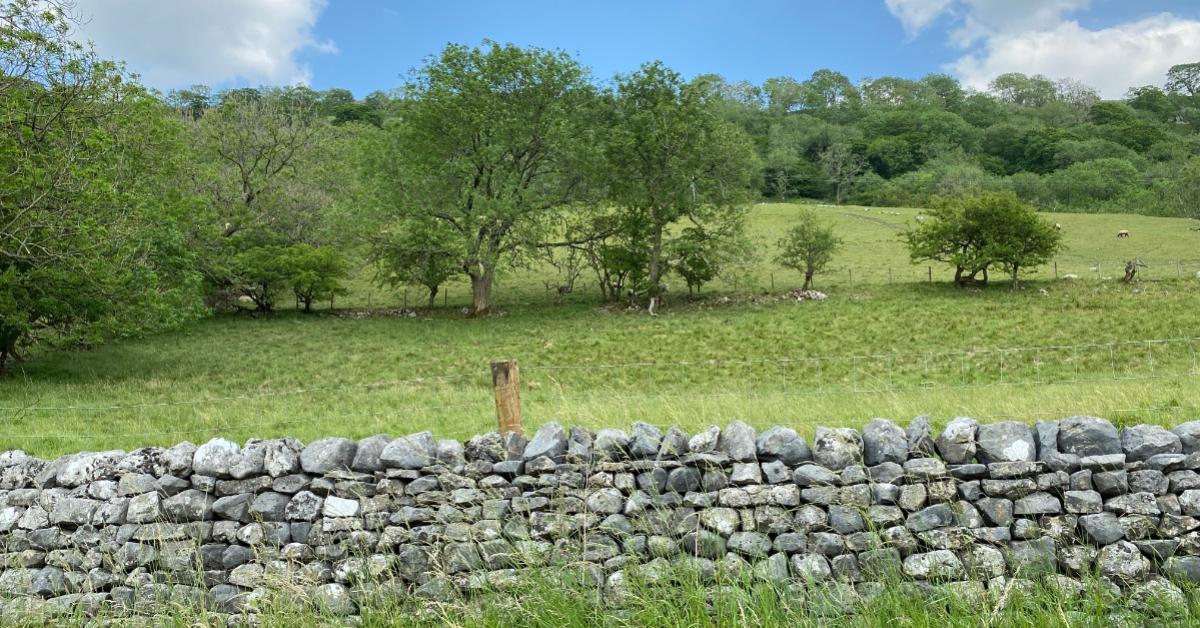
Few technological changes have been criticized as much as the enclosure movement, strongly associated with the British Isles, but actually rooted in the Netherlands. Consider this definition of the movement offered by the Community Environmental Legal Defense Fund (CELDF):
The Enclosure Movement or inclosure is the process which was used to end traditional rights, and has historically been accompanied by force, resistance, and bloodshed. It has been referred to as “among the most controversial areas of agricultural and economic history in England.”
The enclosure movement was a push in the eighteenth and nineteenth centuries to take land that had formerly been owned in common by all members of a village, or at least available to the public for grazing animals and growing food, and turn it into privately owned land, usually with walls, fences, or hedges around it.
The CELFD website acknowledges that “some small number of enclosures had been going on since the 12th century, especially in the north and west of England, but it became much more common in the 1700s.” For critics, enclosure, the idea of heartlessly depriving the sturdy English yeoman of his rightful land, was a necessary precondition of establishing a capitalistic society during the Industrial Revolution.
Some economists, including Ludwig von Mises in Human Action, have expressed doubt about the prevailing view:
In the first decades of the Industrial Revolution, the standard of living of the factory workers was shockingly bad when compared with the contemporary conditions of the upper classes and with the present conditions of the industrial masses. Hours of work were long, the sanitary conditions in the workshops deplorable. The individual’s capacity to work was used up rapidly. But the fact remains that for the surplus population which the enclosure movement had reduced to dire wretchedness and for which there was literally no room left in the frame of the prevailing system of production, work in the factories was salvation. These people thronged into the plants for no reason other than the urge to improve their standard of living.
Note Mises’s transition from the previous manorial method of agricultural production directly to the Industrial Revolution. For the purpose of writing Human Action, Mises may have seen no need to recognize the transition through the British Agricultural Revolution of which enclosure was an early part. Nonetheless, it is difficult to picture starving former farmers trekking their way to cities to face equally devastating economic conditions. Something is missing in this picture.
We get a clue from British population figures. A graph of England’s population reveals a significant growth at the end of the sixteenth century, followed by a leveling period in the early seventeenth century, followed by a gradual rise during the early eighteenth century and explosive population growth in the late eighteenth century before the Industrial Revolution took effect. There are no significant population decreases signaling massive starvation as occurred in Ireland in the same periods. The British Agricultural Revolution appears to have somehow fed farmers dislocated by the increased agricultural productivity.
That the enclosures affected northern and western England in particular is significant. These are areas less receptive to raising grains and vegetables, so enclosure can be seen as an opportunity to achieve improved land productivity and division of labor. Wikipedia comments on the transition from the manorial system to the Industrial Revolution as follows:
Between the 16th century and the mid-19th century, Great Britain saw a massive increase in agricultural productivity and net output…. New agricultural practices like enclosure, mechanisation, four-field crop rotation and selective breeding enabled an unprecedented population growth, freeing up a significant percentage of the workforce, and thereby helped drive the Industrial Revolution.
These agricultural improvements are difficult to quantify over time with the exception of Charles Townshend’s crop rotation system, which converted three productive fields into four, a productivity increase of 33 percent.
Murray Rothbard has dedicated a chapter in Economic Thought before Adam Smith to “the founding father of modern economics: Richard Cantillon.” But how does the timeline above, from enclosure in Britain to the Industrial Revolution, relate to Rothbard’s description of the contributions of Cantillon? First, we should recognize that Cantillon wrote Essay on the Nature of Trade in General around 1730.
The year 1734 is the date assigned to Charles Townshend’s crop rotation system, so Cantillon may have been aware of the enclosures but little else that characterized the British Agricultural Revolution. And yet it is Cantillon who recognized the farmer as an entrepreneur. Furthermore, Cantillon identified three of the four factors of production specifically, and the fourth, capital, by implication.
Perhaps Cantillon’s most important contribution was his deemphasis of economic class in explaining the creation of material progress. While emphasizing the guiding role of the entrepreneur in the employment of the factors of production, Cantillon assured his readers that entrepreneurship was open to all—not just farmers and landowners.
Enclosure has been much maligned by historians. Their focus has been on the displacement of a workforce that had previously used so-called common ground to sustain a living. The displacement cannot be denied, but its negative effects were relatively short term.
On the other hand, enclosure reflected a heightened sensitivity to a greater potential use of land. Mechanization, four-field crop rotation, selective breeding, and other improvements in land productivity benefited from that basic idea. Given the times in which he lived, Cantillon’s insight into economic progress is remarkable.






